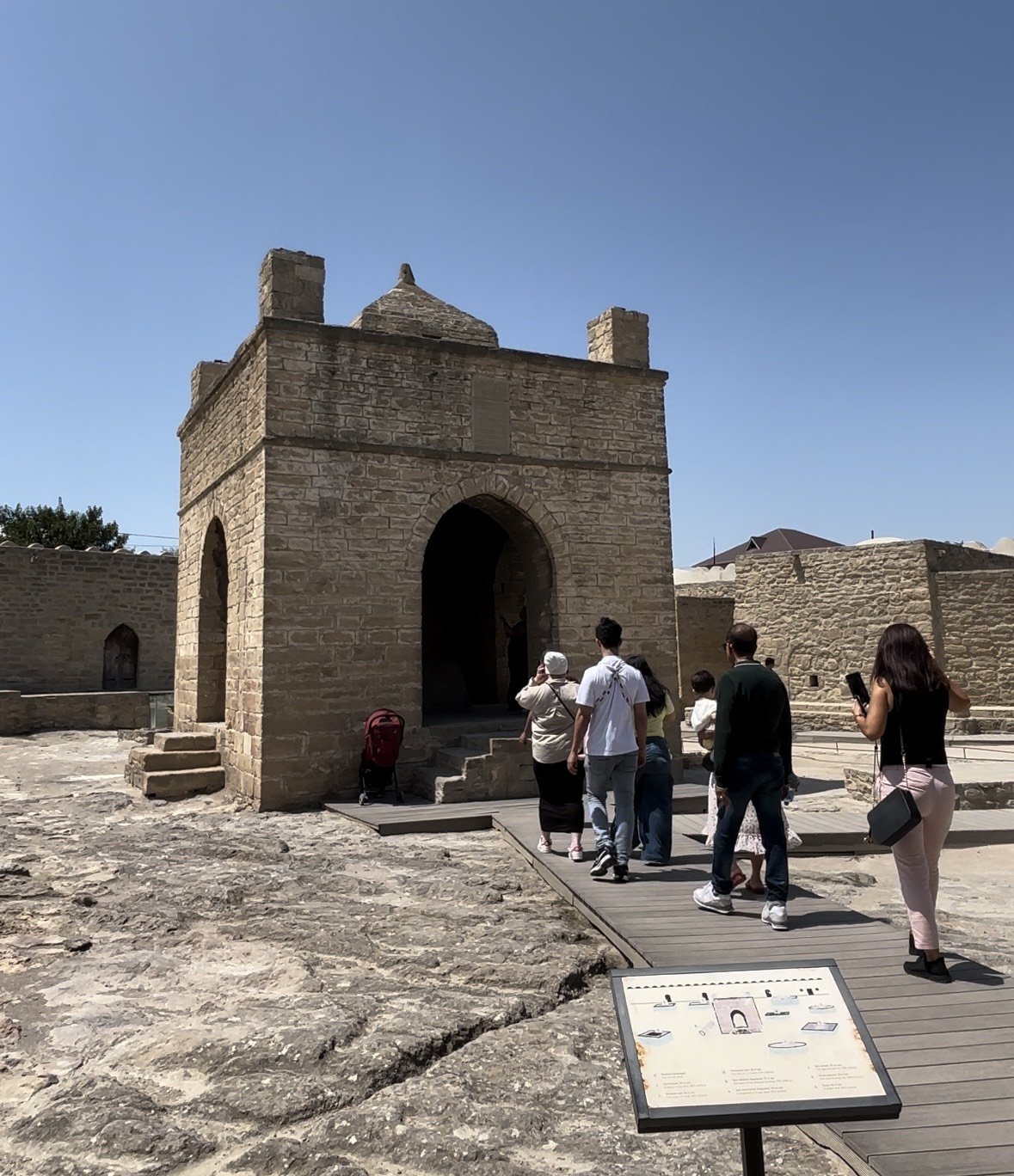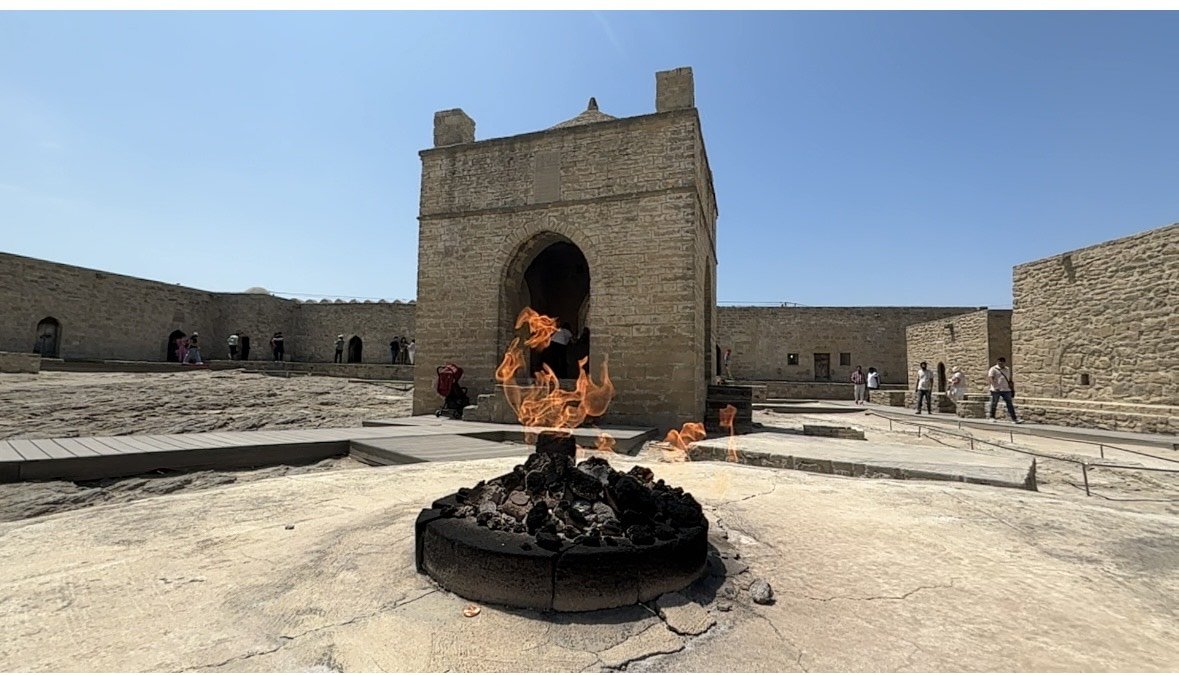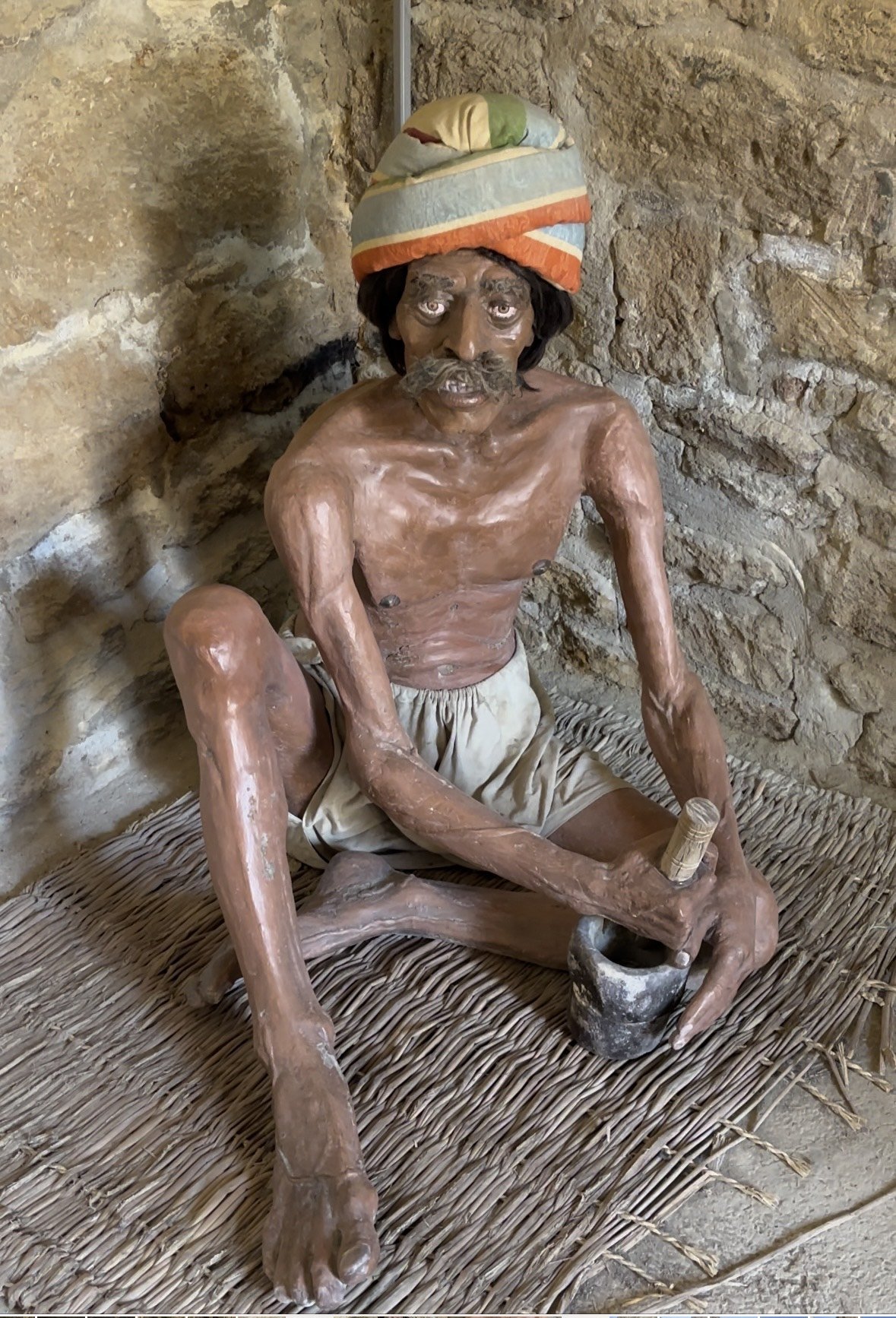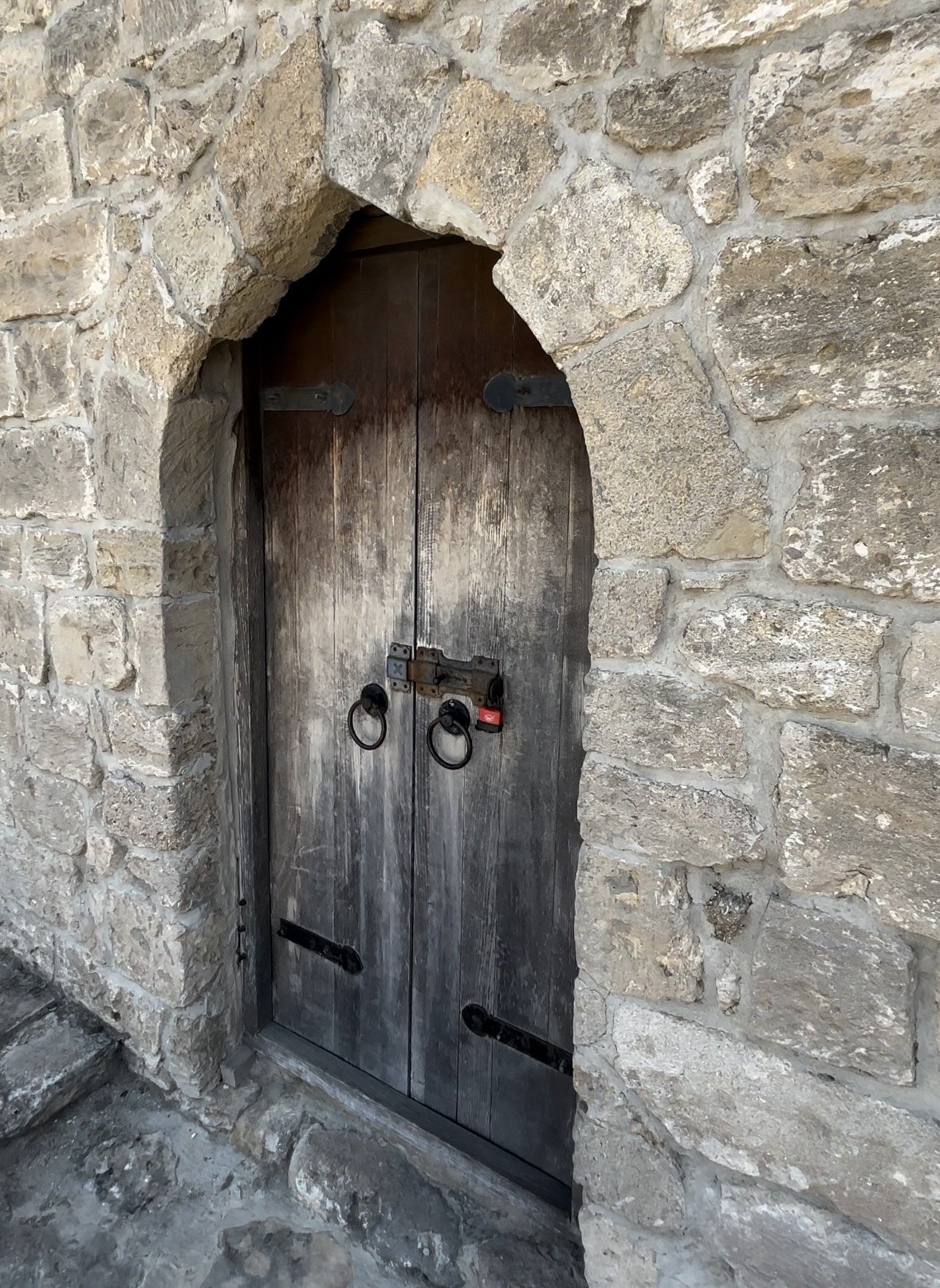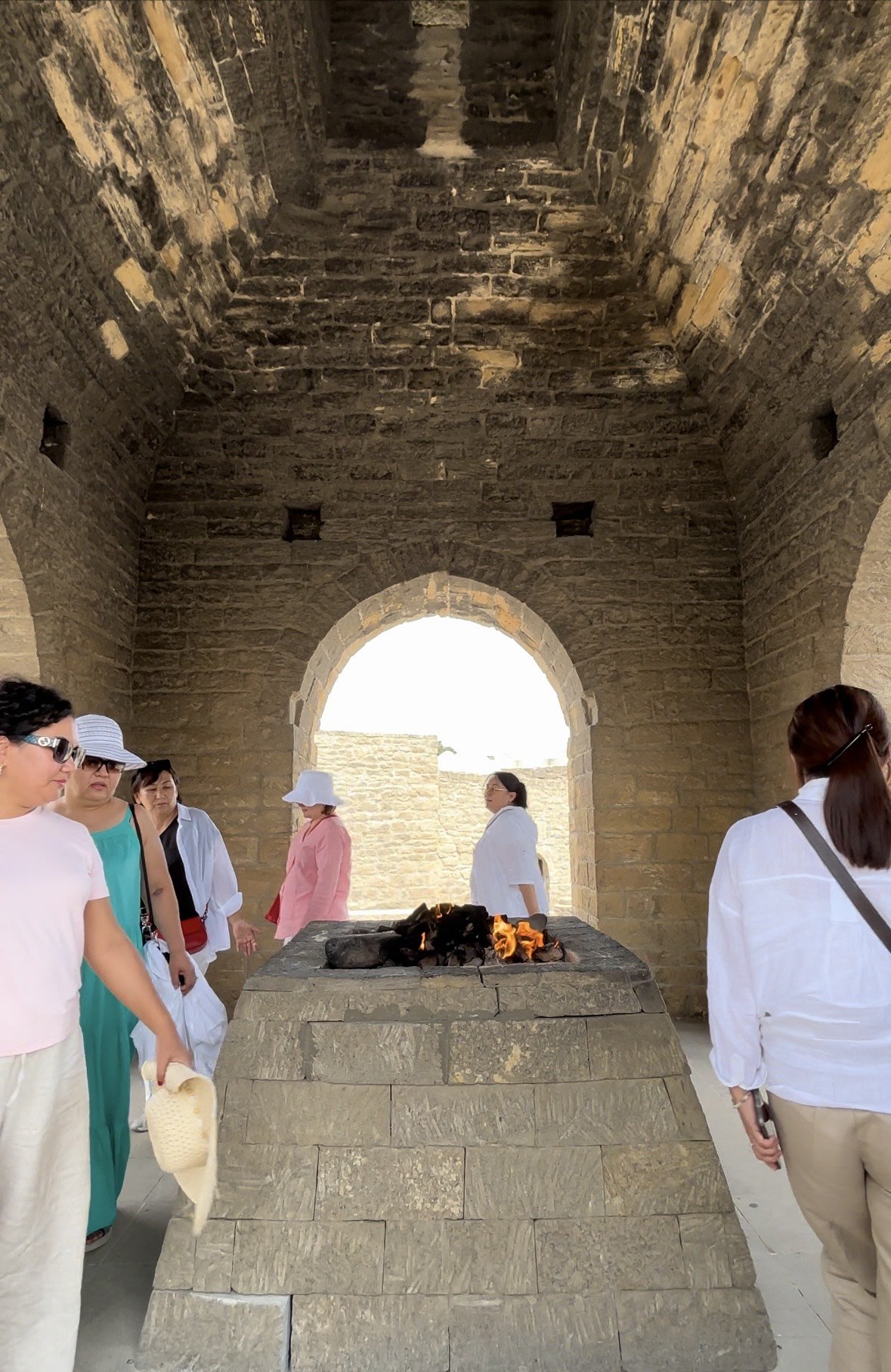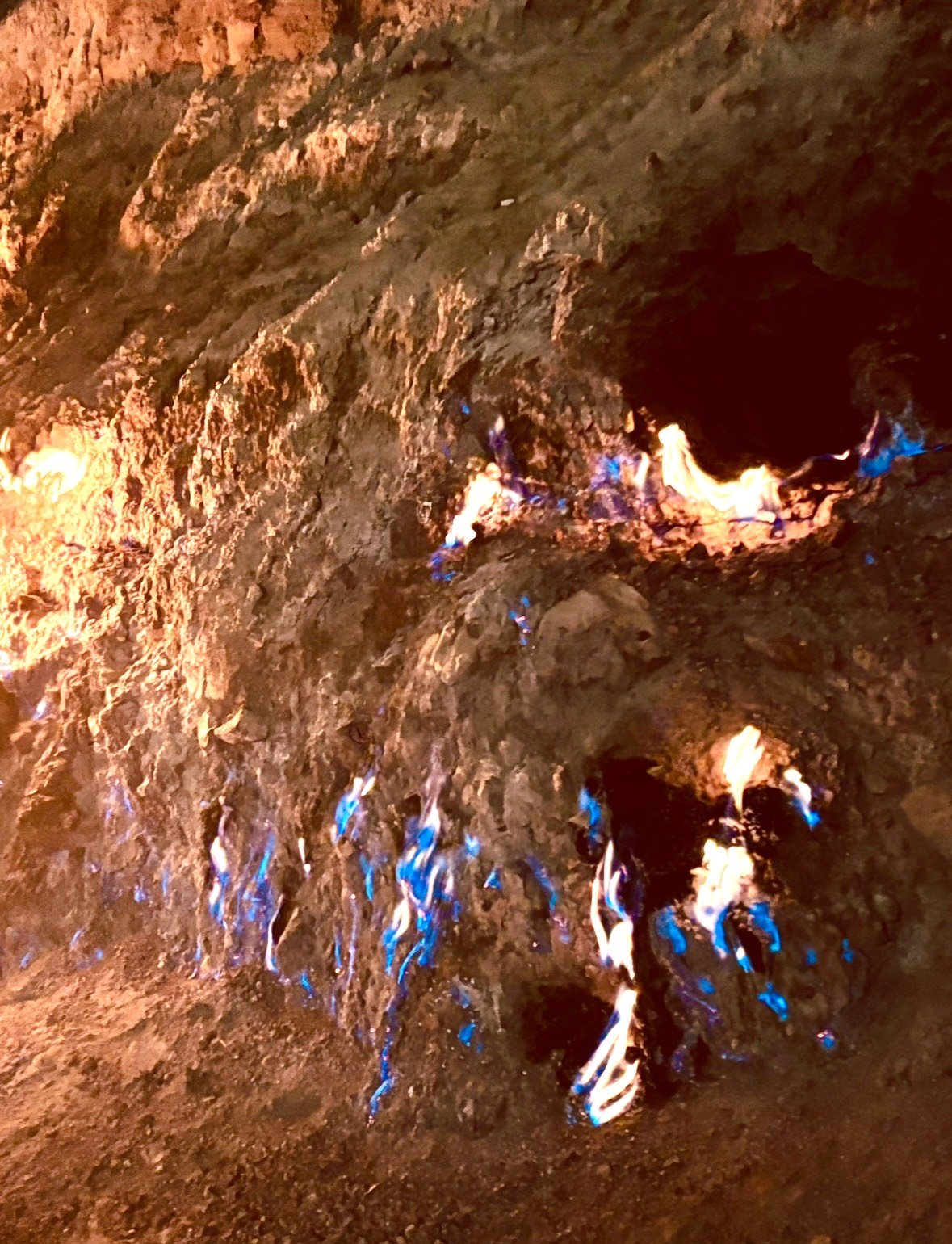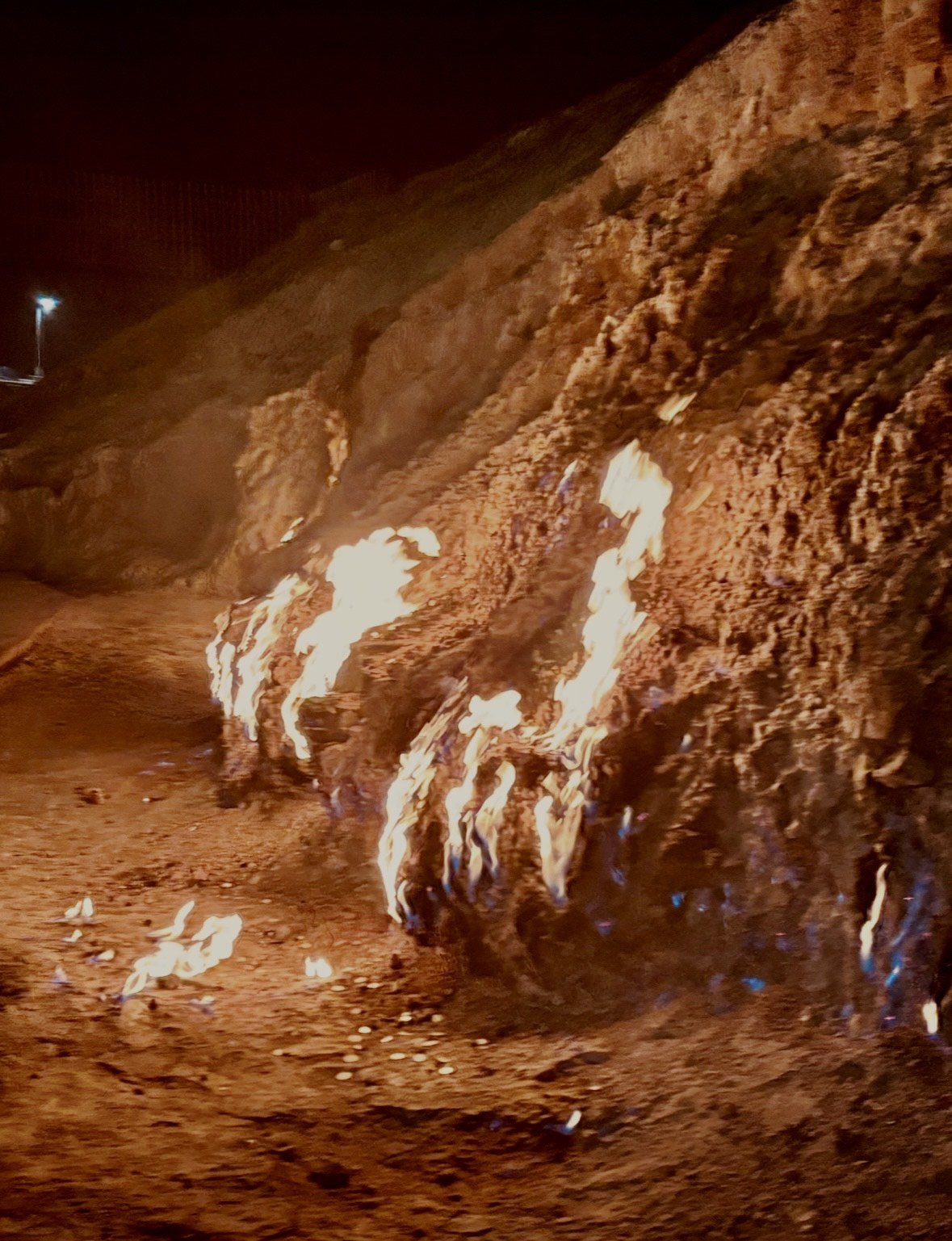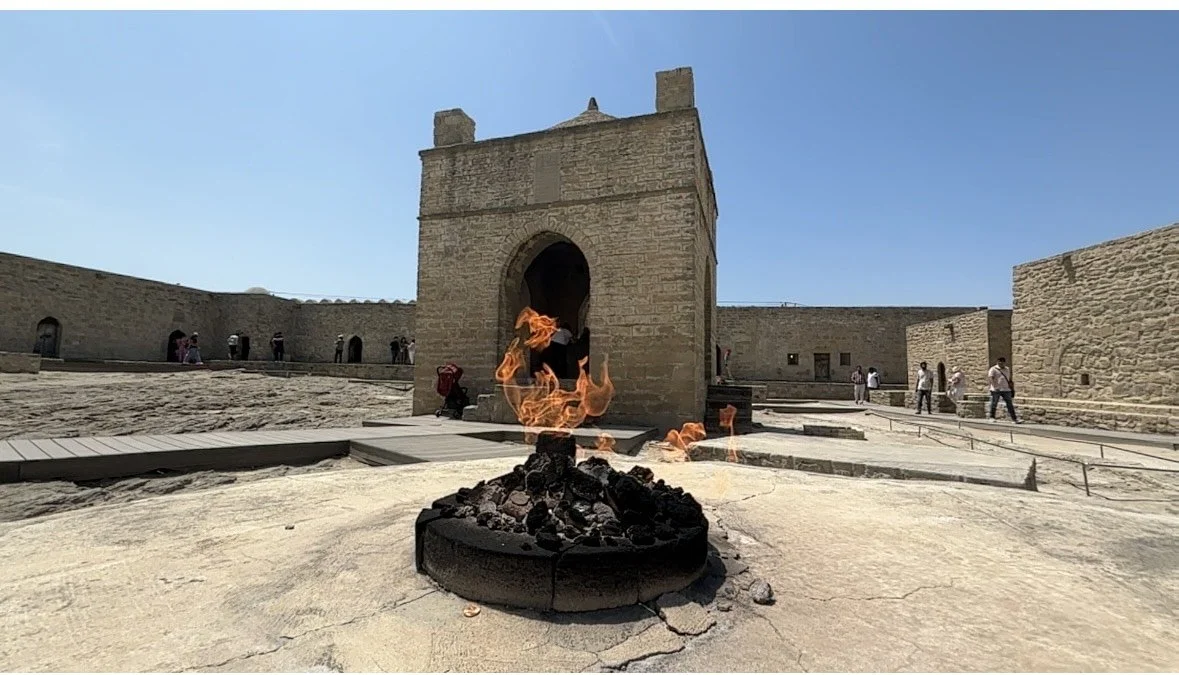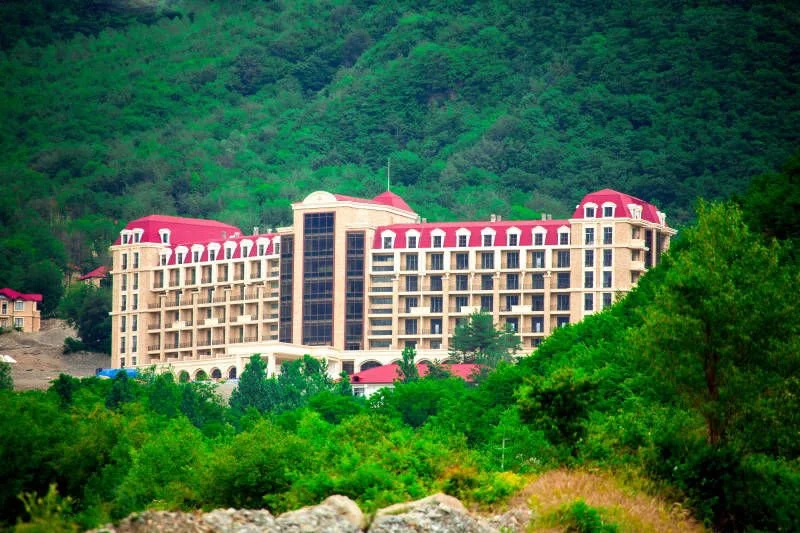Candy Cane Mountains, Pink Lake, Shiva Temple & Flaming Mountain
Duration: full day I Languages: English, Russian, Germany
Paint Your Trip with Pink, Orange and Fire colours of Natural Wonders
Candy Cane Mountains, Khizi-Pink Lake;-Atashgah Fire Temple; Yanardagh Flaming Mountain.
Fixed prices only, perfect suit your budget!
I The tour should start no later than 1pm. The duration from Baku to Candy Cane Mountains takes approximately an hour.
On the highway between Baku and Quba in Azerbaijan, a series of red-and-white striped peaks emerge suddenly from the surrounding landscape. Part of the Greater Caucasus mountain range, the Candy Cane Mountains earned their nickname thanks to their striking resemblance to the classic Christmas treat.
The color of these rocks is a product of the area's unique geology. The Candy Cane Mountains are made of shale, a type of sedimentary rock made up of many thin layers stacked on top of each other. Long ago, before the rock was formed, changes in the environment led to differing mineral composition as the layers of sediment were deposited.
As the shale came in contact with water, layers that contained iron oxidized and turned red, while layers without iron remained shades of white and gray. Over time, tectonic movement and erosion have exposed these sedimentary layers into a visual representation of geologic history. The Candy Cane Mountains also contain many belemnites, fossils of an extinct order of squid-like creatures from the Cretaceous period.
I Second point is a Pink Lake. Duration from Candy Cane to Pink lake approximately: 1 hour and 30 minutes.
Nestled amidst the stunning natural beauty of Azerbaijan lies Masazir Pink Lake, a hidden gem that enchants visitors with its tranquility and picturesque surroundings.
Located just a short drive away from the bustling capital city of Baku, this stunning lake offers a perfect escape for those seeking a peaceful retreat from the urban chaos. It is one of the most unique and beautiful lakes in the world, known for its stunning pink hue. There're only 8 lakes in the world, that have the same peculiarity as the Masazir Lake, and they all can be considered natural treasures that need to be cherished and protected.
Read more:https://www.niveusflos.com/blog/articles/traveler/world/pink-lakes
I The third point: Atashgah Fire Temple of 17th century.
Centuries have passed, the Great Silk Road and trade connections of medieval centuries which passed through Azerbaijan connected again the Zoroastrians with the Ateshgah shrine after change of many generations. Traders who visited Azerbaijan after arriving to their homelands talked a lot about the unique phenomenon they had seen – appearance of flames on a ground. So, from the beginnings of the XVII century flow of pilgrims appeared in Surakhani. According to the german traveller E. Kaempfer which visited Azerbaijan in 1683: from the middle of XVII century pilgrims started to rebuild the temple again. In the beginnings of the XIX century the temple received the form which is represented today without any changes. The temple’s plan is five corner complex with an entrance portal surrounded with battlement type walls.
I The 4th point is a Flaming Mountain - the natural Wonder Yanardagh
Yanardag is located in the village of Mammadli on the Absheron Peninsula, around 27 km from Baku. The area of the reserve spans 64,55 ha. The main attraction of Yanardag, which literally means “burning mountain”, is a spectacular hill with a constantly burning wall of flames. Thanks to tectonic shifts and volcanic material below the earth’s surface, natural gas leaks from the rocks. The Italian trader and traveler Marco Polo even mentioned the flames during his travels to Baku and its surroundings, but most probably the fire has been burning for over more years at Yanardag.
On the opposite side of "Yanardag" another hill used to burn for thousands of years, but as its natural gas leakage moved on due to tectonic shifts the three flames ceased to burn a few hundred years ago. Nevertheless, this fire is believed to have inspired the symbol of Baku which features three flames and the sea. Around the Absheron Peninsula more of these burning rocks used to exist and were used as sacred places by Zoroastrians in ancient times. The larger Yanardag reserve offers more heritage sites such as an active mud volcano, a natural sulfur spring, the Girmaki valley and others which can be visited with one of our tourist guides.







